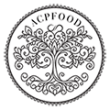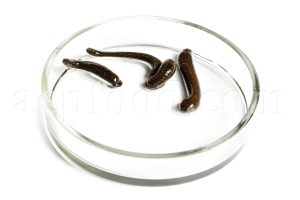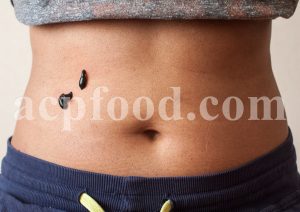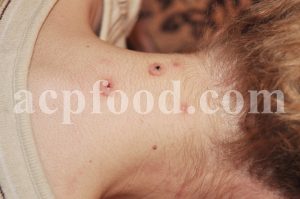History of Leech Therapy
Leech therapy has been used medically from 2500 years ago in India, Greece, Rome and Iran, then in Europe. In the 19th century, this small animal was used to treat any pain, including headache, fever, infected wounds, boils, abscesses, swellings, hemorrhoids, etc. So far, zoologists have identified 650 types of leeches, 50 of which feed from mammal’s blood.
Some types of leeches are extremely dangerous and pathogenic, but there are several types of leeches that have interesting therapeutic effects. Anticoagulant which exists in leech saliva is called hirudin, which causes blood thinning, treats vascular blockage and, of course, increases local blood supply and oxygenation. At least one hundred types of special substances with various therapeutic effects are secreted by leech. Now, in many reputable clinics in Europe and America, leech is used for blood thinning following heart angioplasty, skin grafts and organ transplants (to accelerate local blood supply and prevent blood clots in the vessels), varicose veins, skin lesions, skin beauty and even strengthening the immune system is used.
Even countries like Russia and England have provided a huge income for their economy from the export of leeches. In Iranian traditional medicine, the use of leech is very wide and it has been used in treatment of various diseases.
Iranian Sages Point of View About Leech Therapy
Seyyed Esmaeil Jorjani
In the third volume of “Zakhireh Khwarazmshahi” or “The Treasure of King Khwarazm” book has mentioned how to use leech and its therapeutic position. He knows the benefit of leech therapy more in skin diseases and believes that one should first cleanse the body with laxatives and bloodletting, and then do this therapy.
Ibn Sina (Avicenna)
In Canon of Medicine book Avicenna says: Leeches draw blood from deep inside the body better than hijama.
Indians have said that some leeches are poisonous. Any leech that has a big head and a dark green color and has fine and soft hairs and looks like an eel is poisonous.
Leeches that are hunted from black mud waters should not be used and instead, leeches that are hunted from mossy waters should be used.
Suitable leeches Have the Following Characteristics
1- The leeches with olive green color and two golden yellow lines drawn on their backs.
2- Red-yellow leeches.
Karim Khan Kermani
In Javame al alaj book Karim Khan Kermani says: Leeching therapy is an alternative to wet hijama. Leeches can absorb blood impurities. The act of leeching therapy is permissible only after cleansing the body from rotten humors, because it is likely to pull the rotten material towards the organ.
There may be an area in the body that cupping and hijama cannot be done on it, but leech therapy can be done on it, and sometimes swelling and foam of the blood during cupping may prevent the blood from coming out, but it won’t be the same in leech therapy. And also it can be done on some body area which we don’t hijama because of the remaining scars.
The best type of leeches is the one in the shape of a mouse’s tail, with a small head and a red belly and a green back, or if it has a yellow, orange, or liver-colored line on its back. And those found in pure water.
You should avoid the dark blue or azure color and fluffy ones and those that are in sewages. Because they are poisonous. Leeches should not be used for children under two years old and elderlies over sixty years old.
Leech Saliva Health Benefits
Medicinal leech is known as Hirudo Medicinalis (H.M.), which is considered as a blood-sucking parasite. Its length is about 12 cm, its width is about one centimeter, its weight is 2 to 3 grams and it reproduces by viviparous. The body structure of this creature is very simple and basic in terms of the nervous system. In order to multiply and grow, they are usually raised in large aquariums and in groups. Leech saliva contains many enzymes that have many therapeutic properties as follows:
1- Anesthetic property: This property reduces local pain when bitten, which is mainly due to the presence of hirudin.
2- Vasodilator property: This property is due to histamine, which causes blood vessels to dilate.
3- Anticoagulant property: This property is due to the Hyaluronidase enzyme present in the saliva of H.M. In addition, this enzyme has very strong mucolytic and antibiotic properties to the extent that it is very effective in the treatment of glaucoma.
4- Proteolytic Inhibitor property: This state is due to the presence of 3 special proteins named Eglin, Bdellin and Hirudin.
Hirudin: is a specific inhibitor of thrombin, so it is effective in the process of clot formation. Today, this substance is made artificially for use in medical affairs.
Bdellin: with a molecular weight of 5000, it is an inhibitor of Trypsin, Plasmin and Acrosin, and it is often used to inactivate plasmin.
Eglin: with low molecular weight, it has the property of inhibiting Elastase, Cathepsin, Subtilisin and Chymotrypsin, which is very effective in reducing inflammation after trauma and surgeries and intestinal endothelium problems, especially Crohn’s disease. In addition, this substance prevents the formation of blood clots following septicemia.
5- Antibiotic property: What has been recently noticed is the property of leech, which is mainly produced by Hydrophila Aeromonas, which lives in the intestine of leech, and is effective against diseases caused by staph aureus, tuberculosis, dysentery, and diphtheria. Many other enzymes and proteins are also present in the anterior and posterior salivary sacs of H.M.
Enzymes Present In Leech Saliva
1- Hirudin: blood anticoagulant
2- Bdellin: It is an inhibitor of proteases such as trypsin, chymotrypsin or plasmin, which have swelling and spreading factors in the body tissue.
3- Apyrase: It is a strong enzyme against the aggregation of platelets with smoothing effects of blood flow.
4- Eglin: in addition to being an anti-inflammatory enzyme, it is also anti-oxidation and anti-radical.
5- Destabilase: This enzyme, which is a very powerful anti-platelet aggregation factor, with fibrinolytic and hydrolyzing effects leads to the dissolution of blood clots.
6- Hyaluronidase: This substance acts both as a spreading factor and as an antibiotic.
7- Lipase and Esterases: They are lipolytic factors and break down fats.
8- An anesthetic substance: When a leech bites the skin, it creates a Y-shaped wound, which is completely painless and creates a cool feeling due to the presence of an anesthetic substance.
9- Anti-elastase: This substance, which works by controlling the action of elastase, is an enzyme that degrades skin elastin.
10- Vasodilating substance: This substance, which has not yet been officially identified, is very similar to histamine. A few minutes after the leech is attached, the bite site becomes red and profuse. Perhaps this hyperemia can be attributed to this substance that has increased blood flow in the area.
11- Nitric oxide synthetase: this factor present in leech saliva is similar to its human type, which causes the repair of damaged nerves.
Important Recommendations Before Leech Therapy
- All cupping, hijama and bloodletting rites (time, place, diet before and after it) are the same for leech therapy.
- WARFARIN, ASPIRIN (ASA), DIPYRIDAMOLE, OSVIX, CLOIDOGREL tablets and painkillers should be stopped at least three days before leech treatment (with the supervision and consultation of a doctor).
- Do not rush for doing this therapy. First, blood and liver should be cleansed with special herbal medicines, hijama and cupping, and bloodletting, then leech therapy will have a wonderful effect.
- It is not allowed to consume cold temperament food stuffs such as dairy, eggs, rice, cucumber and lettuce, kiwi, tomatoes, pasta, barley, etc. At least 8 hours before it.
- Consuming pomegranate paste, pomegranate juice and rose water (six units of pomegranate juice + one unit of rose water), laxatives and herbal remedies before leech therapy (at least one week), makes leech therapy more effective.
- Hunger, overeating and lack of sleep will reduce the benefits of leech therapy.
- Women should not take leech therapy during pregnancy and menstruation.
- Before and after it, long and hot bath, sauna and jacuzzi are not allowed.
- Mental and physical relaxation is needed during treatment. If you have stress and fear, high anxiety and excitement or excessive cheerfulness, consult your doctor.
- If you have bitterness and dry mouth before and after that, eat a little pomegranate paste or plum paste.
- You should not have diarrhea, profuse urination, sweating and vomiting before leech therapy.
- Some traditional medicine doctors set an age limit for leeching therapy and do not allow it before the age of 2 and after the age of 60. Of course, some do not believe in this limitation.
- It is better to keep the leech in clean water for a while and change the water in the container once or twice a day to clean the leech better.
- The leech should not be thrown directly on the vein. Leech treatment is not suitable for areas of the skin that look very cold and pale or are severely swollen.
- For the body areas with thin skin such as the face, large leech should not be used. Leeches should be small.
- Small leeches should be used for people with anemia.
- A large number of leeches should not be used in one section. Because the patient’s immune system may react against the saliva of leeches or the patient may become weak. If necessary, leech therapy should be done frequently.
- While doing this therapy, it is better for the patient to sit down and if he/she is weak, he/she should lie down and raise the legs so that the blood rushes to the brain and the weakness disappears and the patient’s body becomes wet with sweat, which is a sign that weakness is relieved, then the patient should be given honey, rose water or pussy willow drink.
Important Recommendations After Leech Therapy
- Do not contact the target area with water for two days.
- The area normally bleeds for 8 to 16 hours. Do not worry if the bleeding is normal and mild. Less mobility and lying down will reduce bleeding. If bleeding continues after 12 hours, visit your doctor.
- Sometimes itching starts after twenty-four hours after therapy and sometimes it lasts up to a week. In case of limited itching, use violet oil, coriander oil or camphor oil on the area. In case of severe itching, visit your doctor.
- Do not have sexual intercourse for twenty-four hours after leech therapy.
- After leech therapy, physical rest, and even mental rest (avoid tension, study, watch television, going to the parties or…) are recommended. (About eight hours)
- Do not consume salt, fish, and pickles for twenty-four hours.
- The contact of cold weather and cold water with the area causes severe itching and swelling.
- In general, very hot and very cold temperament foods, spices and fruits are prohibited and harmful after it. More moderate foods must be used such as:
- Celery
- pear
- broth
- Apple
- Sakanjbin and…
- Eating heavy and fatty foods and overeating after leech therapy is very harmful.
- Stand and walk as little as possible after it.
- Sleeping after leech treatment is prohibited for up to six hours.
- In case of thirst and dry mouth after leech therapy, drink non-alcoholic beer plus red sugar every eight hours.
- In order to compensate the lost blood, eat grilled mutton (without bread and rice) for 5 nights for dinner. It will be more complete if eaten with sumac and lime juice.
- When the leeches are fed with blood enough, they leave the body area.
- According to the advice of most Persian traditional medicine doctors, it is better to draw out more blood and harmful substances through cupping the leeched area.
- Clean the area with an antiseptic solution such as thyme decoction and then pour turmeric powder on it to stop the bleeding.
- In case of weakness and dizziness, the patient should lie down quickly and keep the legs up.
- In case of infection in the target area, which is determined by whiteness on the wound, redness around it, pain and swelling, prepare and use the following medicine:
Prepare equal amounts of coriander seeds, thyme, and marshmallow flowers and grind them completely. Knead a few spoonfuls of this powder with hot boiled water each time according to the size of the wound and poultice a bandage on the wounds while the knead is still warm and cover it with several layers of bandage so that the paste does not dry after 24 hours. Never change the bandage earlier than 24 hours. Usually, after doing it once, the infection disappears completely. If the infection has not completely healed, repeat this once more.
How Is Leech Therapy Done
The doctor first takes a leech and places the side which moves and is smaller (which is the head of the leech) on the area. If this is done in the early spring season, the leech will easily and willingly grab the area and start sucking the blood, but in other seasons, especially summer, this is not easily done, and the leeches are a little lethargic due to the increase in ambient temperature. And for this reason, the doctor should put his thumb or forefinger on the head of the leech to stimulate the leech to connect to the position by throwing a shadow on the skin.
If this does not work, the doctor places the leeches on a clean towel or sterile gauze, turns the gauze on the body, so that the leeches are on the body area and the gauze is placed on them. Meanwhile, a little water is poured on the cloth, this will stimulate the leeches to grab the position.
Actions To Be Taken Before Sticking The Leech
To attach a leech to a hand or foot, put the area in warm water for half an hour so the softness and warmth of the skin stimulates the leech to grab the area.
If the desired area is behind the ears or on the face or back, gently clean and massage the position with a clean towel soaked in warm water until it becomes warm and red. This makes leeching grab the area easier.
The higher the temperature difference between the leech and the body area, the easier the leech sticks. The body area should be clean, soft, and warm.
Eliminating Possible Allergic Reaction After Hirudo Therapy
Allergy shows itself through symptoms such as itching. You can do cupping on the area or drink an anti-allergenic infusion such as dill, coriander and marjoram. You can also mix a tablespoon of honey and a teaspoon of salt and apply it on the wound, which will relieve itching.
What Should Be Done With Leeches After Leech Therapy?
Contrary to public opinion, which thinks that leeches die after feeding, they stay alive, and killing them is inhumane behavior. You can leave leeches in ponds and springs after washing them, because leeches do not stick to another creature for 2 months (until they digest the blood completely) after eating blood. So they cannot cause disease transmission.
What Diseases Can Be Treated Through Leech Therapy?
- MS
- Strokes
- Headache
- Migraine
- Sinusitis
- Delirium
- Dizziness
- Alzheimer’s
- Parkinson’s
- strengthening memory
- Insanity
- Epilepsy
- Cerebral palsy
- Convulsion
- Sty
- Cataract
- Glaucoma
- Eye weakness
- Night blindness (Nyctalopia)
- Pterygium
- Eye inflammation
- Watery and itchy eyes
- Tinnitus
- Ear pain
- Ear infection
- Ear ulcer
- Anosmia
- Nasal dryness
- Nasal ulcer
- Facial skin darkening
- Skin wrinkles
- Cracked lips
- Black lips
- Canker sores
- Toothache
- Gum infection
- Gum swelling
- Peritonsillar abscess
- Swelling of the tongue
- Diphtheria
- Pharynx ulcer
- Stuttering
- Chest pain
- Asthma
- Pneumonia
- Heart palpitations
- Heart attacks
- Clogging of coronary arteries
- Mitral valve lesions
- Hiccups
- Hemorrhoids
- Gastric fissure
- Fistula
- Liver cirrhosis
- Prostatitis
- Jaundice
- Kidney and bladder ulcer
- Orchitis
- Genital ulcer
- Insufficient erection of the penis
- Sexual weakness
- Micropenis
- Varicocele
- Amenorrhea
- Severe itching of the cervix and anus
- Painful periods
- Congestion of genital vessels in women
- Uterine fissures and wounds
- Abortion
- Gonorrhea
- Infertility
- Pain in the neck vertebrae
- Elbow pain
- Arthrosis
- Rheumatism
- Rheumatoid arthritis
- Gout
- Joint inflammation
- Calcaneal spur
- Muscle spasm
- Ecchymosis
- Swelling behind the knee
- Burning soles
- Leg muscles coldness
- Acnes
- Sudden hair loss
- Freckles
- Vitiligo
- Herpes
- Face blushing
- Eczema
- Psoriasis
- Abscess
- Wart
- Cutaneous leishmaniasis
- Urticaria
- Dry and cracked heels
- Animal bites
- Behcet’s syndrome
- Lupus
- Quit addiction
- Blood pressure
- Varicose veins
- Gangrene
- Brain tumors
- Diabetes
- Severe wounds in diabetic patients
- Thrombosis
- Filariasis
- Sciatica pain
- Anal fistula
References:
- Blood therapy from the perspective of Iranian traditional medicine book by Seyyed Mohamad Mousavi 1378
- Treatment of diseases with Iranian leech book by Seyyed Mohamad Mousavi 1390
- Types of temperament book by Dr. Hossein Kheirandish 1388
- 15 days to health book by Jamshid Khodadadi 1396
- Leech therapy in traditional and popular medicine by Dr. Siadati
- Knowledge of temperaments book by Dr. Seyyed Ali Abolhabib 1399
- The Canon book (First Volume) by Ibn Sina




